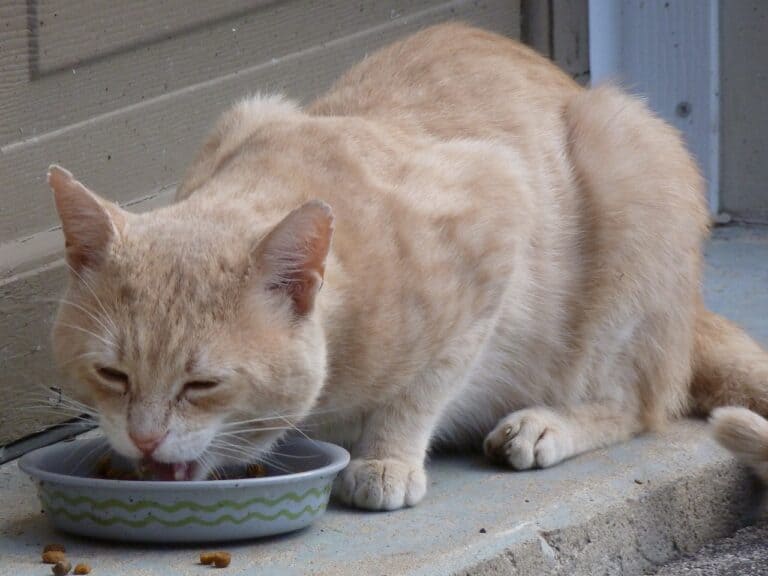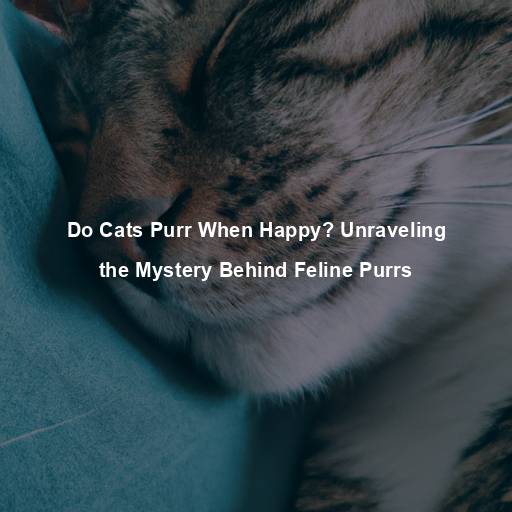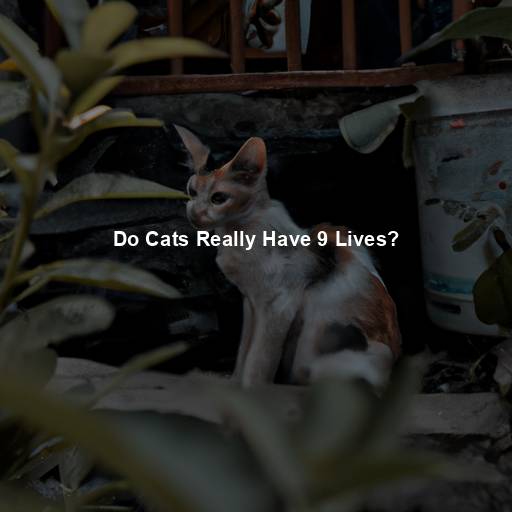Can Cats and Dogs Mate? A Closer Look at Interspecies Reproduction
Last Updated on November 13, 2023 by Evan
Contents
- 1 Understanding the Reproductive Capabilities of Our Furry Friends
- 2 The Basics of Reproduction: Canine and Feline Style
- 3 Dispelling the Myth: Rumors and Misconceptions
- 4 Nature’s Grand Design: The Importance of Species Diversity
- 4.1 The Significance of Species Diversity
- 4.2 Can Genetic Engineering Overcome the Biological Barriers?
- 4.3 What About Artificial Insemination or In Vitro Fertilization?
- 4.4 Are There Any Similarities in the Reproductive Behaviors of Cats and Dogs?
- 4.5 Can Cats and Dogs Form Strong Bonds Despite Their Inability to Mate?
- 4.6 Are There Any Other Instances of Interspecies Reproduction?
- 5 The Intriguing World of Nature’s Limitations and Wonders
- 6 Inquisitive Minds and the Quest for Knowledge
- 7 A Harmonious Coexistence: Cats, Dogs, and the Joy They Bring
- 8 Embracing the Wonder of Nature’s Diversity
- 9 In the End, Love Knows No Boundaries
- 10 FAQs – Can Cats and Dogs Mate?
- 10.1 Can cats and dogs mate with each other?
- 10.2 What happens if cats and dogs attempt to mate?
- 10.3 Are there any hybrids between cats and dogs?
- 10.4 What are the consequences of forced breeding between cats and dogs?
- 10.5 Can cats and dogs have a non-reproductive relationship?
- 10.6 Are there any exceptions to cats and dogs mating?
Understanding the Reproductive Capabilities of Our Furry Friends
For centuries, pets have brought immense happiness and companionship to our lives, evoking emotions we can hardly put into words. The intriguing possibility of cats and dogs taking their relationship beyond friendship has long captivated our imaginations. Curiously, can these two beloved creatures actually mate? Prepare to embark on a thought-provoking expedition with us as we explore the enigmatic world of interspecies reproduction, shedding light on the possibilities and boundaries that lie within the realm of cats and dogs creating offspring together.
The Basics of Reproduction: Canine and Feline Style
Understanding the Differences in Reproductive Anatomy
To comprehend the possibility of cats and dogs mating, we need to first understand their reproductive anatomy. Cats and dogs have distinct anatomical differences that play a crucial role in their reproductive capabilities.
Cats: Female cats, known as queens, have a unique reproductive system. They have an induced ovulation mechanism, meaning that ovulation is triggered by the act of mating itself. Male cats, on the other hand, possess barbed penises, which facilitate successful mating by maintaining copulatory contact.
Dogs: Female dogs, or bitches, experience a regular estrous cycle, commonly known as going into heat. Unlike cats, dogs have a predictable reproductive pattern, with ovulation occurring before mating. Male dogs have a protruding penis without any specialized structures, making copulation possible.
The Biological Barrier: Species Compatibility
While cats and dogs may share our homes and our hearts, they belong to different species, each with its own unique genetic makeup. Reproduction between two distinct species is hindered by a biological barrier called “interspecies incompatibility”. This barrier, combined with the anatomical differences, poses significant challenges for successful mating and the production of viable offspring.
When it comes to cats and dogs getting together in the baby-making department, it’s a classic case of genetic incompatibility. These cuddly creatures have a fundamental difference in the number of chromosomes they bring to the table. Cats rock an impressive 19 pairs, while dogs flaunt a whopping 39 pairs. This mismatch in chromosome numbers leaves little room for the genetic material to sync up during the highly complex process of fertilization, ultimately putting a big ol’ roadblock in the path of interspecies reproduction.
When it comes to the fascinating world of animal reproduction, it seems that cats and dogs have found themselves on different chapters of the book. Not only do they have genetic differences that make them incompatible, but their courtship rituals, mating behaviors, and reproductive strategies are as distinct as night and day. This remarkable dissimilarity throws up perplexing barriers that heavily influence their ability to successfully mate and ensure the continuity of their respective species.
Dispelling the Myth: Rumors and Misconceptions
The “Cabbit” and Other Urban Legends
Over the years, numerous myths and urban legends have circulated regarding the possibility of cats and dogs mating and producing offspring. One such mythical creature often mentioned is the “cabbit,” a supposed hybrid resulting from the mating of a cat and a rabbit. However, it’s important to approach these claims with a critical mindset and separate fact from fiction.
Unraveling the Genetics: Fascination ensues when contemplating the existence of a cabbit: a fantastical concoction bringing together the worlds of feline grace and lagomorphic charm. However, delving into the intricate tapestry of genetics reveals an undeniable truth – the fusion of cats and rabbits into viable offspring is an enigma beyond the realm of possibility. While superficial resemblances may bewilder the observer, with whimsical long ears or an alluringly fluffy tail, these allusions are but whimsical happenstance, devoid of any genetic harmonization.
The Role of Hybrids: A Glimpse into Interspecies Breeding
Ah, the fascinating world of nature’s entanglements! It’s a peculiar dance between species, where the boundaries blur and hybrids emerge, defying conventional norms. Although cats and dogs may not engage in such intermingling, the concept of hybrids isn’t exclusive to science fiction. Mother Nature, in her enigmatic brilliance, has orchestrated rare instances of reproduction between closely related species, reminding us that life’s tapestry is woven with intricate connections, leaving us in awe and wonder.
In the wild world of hybridization, where the boundaries of nature blur, lies the captivating tale of the liger and tigon. These majestic creatures, born from the union of a male lion and a female tiger, and vice versa, embody the perplexing wonders of genetic connections. Their existence is a testament to the shared lineage between lions and tigers, both proud members of the Panthera genus, intertwining their distinct attributes and igniting our imagination.
When it comes to the world of interspecies breeding, the mesmerizing existence of wolf-dog hybrids leaves us in awe. These incredible creatures, also known as wolfdogs or wolf-dog crosses, are the outcome of a unique connection between a domestic dog and a magnificent wolf. However, the breeding of these hybrids is anything but straightforward, as it intertwines a tapestry of ethical dilemmas and legal boundaries in numerous regions. It’s truly a complex subject that demands our utmost attention and understanding.
Nature’s Grand Design: The Importance of Species Diversity
The Significance of Species Diversity
Have you ever wondered about the potential of cats and dogs interbreeding? It’s certainly an intriguing notion, but we mustn’t overlook the importance of maintaining a diverse range of species. Every living being has a unique role to play in our delicate ecosystem, and this diversity is crucial for the overall health of our planet.
The intricate dance of nature has allocated distinct ecological roles to our beloved feline and canine companions. Cats, with their innate prowess and grace, have honed their skills as nature’s elusive predators. Meanwhile, dogs have embraced their role as trusted companions and guardians, their unwavering loyalty and collaborative nature offering a different kind of harmony to our surroundings. Together, these fascinating creatures ensure the delicate balance of our environment remains intact, their unique contributions adding a touch of wonder and complexity to the tapestry of life.
Ensuring the Survival of Species: When it comes to the long-term survival of our beloved furry friends – cats and dogs – maintaining their genetic integrity is of paramount importance. By steering clear of those interspecies relationships, we are safeguarding the distinct genetic traits and marvelous adaptations that have propelled them to flourish in their specific environments. This preservation of diversity among species plays a vital role in bolstering the resilience and sustainability of our delicate ecosystems.
Can Genetic Engineering Overcome the Biological Barriers?
As science delves deeper into the realm of genomic manipulation, the question arises: Can we transcend the natural boundaries that dictate the compatibility of feline and canine love? While the strides made in genetic engineering are awe-inspiring, the intricate web of biology and morality surrounding inter-species mating presents a formidable challenge. The extensive genetic disparities between our beloved feline and canine companions surpass the scope of a mere gene tweak, rendering the pursuit of a viable solution an enigmatic puzzle that defies simplicity. For now, the mysteries of interspecies reproduction remain shrouded in both marvel and perplexity.
What About Artificial Insemination or In Vitro Fertilization?
Advancements in reproductive medicine have undeniably transformed the possibilities for fertility across species, from humans to animals. Yet, when it comes to bridging the reproductive gap between our feline and canine companions, we face a daunting array of obstacles. The intricate variations in anatomy, hormonal rhythms, and genetic disparities pose formidable challenges, rendering the success of artificial insemination and IVF techniques remarkably elusive. Moreover, as we tread this uncharted territory, ethical contemplations and the well-being of these remarkable creatures must remain at the forefront of our endeavors.
Are There Any Similarities in the Reproductive Behaviors of Cats and Dogs?
While observing the reproductive behaviors of cats and dogs, it becomes apparent that there are some intriguing similarities. They both engage in courtship rituals and utilize mounting as a part of their mating process. Additionally, they possess the ability to convey their readiness to reproduce through scent marking and vocal expressions. However, it is crucial to acknowledge that despite these shared characteristics, the underlying distinctions between these species hinder the possibility of successful interbreeding and the subsequent generation of offspring.
Can Cats and Dogs Form Strong Bonds Despite Their Inability to Mate?
There’s something truly captivating about the way our beloved pets forge surprising connections, defying reproductive boundaries. Whether they’re cats or dogs, they have this remarkable knack for weaving intricate emotional ties that transcend their biological differences. Witnessing these acts of unwavering companionship, loyalty, and affection between these furry beings is nothing short of awe-inspiring, proving that empathy and social bonds know no bounds in the vast tapestry of the animal kingdom.
Are There Any Other Instances of Interspecies Reproduction?
In the vast tapestry of nature, moments of unpredictable connectivity and enigmatic collaboration can leave us astounded and pondering the mysteries of life. Within this enigmatic realm, rare instances of interspecies reproduction have been observed, defying conventional notions of genetic barriers. From the juxtaposition of polar bears and grizzly bears, giving birth to the enigmatic “pizzly” or “grolar” bears, to the mesmerizing blend of domestic cattle and American bison resulting in the captivating “beefalo,” nature continues to unfold its extraordinary secrets, leaving us both perplexed and amazed.
The Intriguing World of Nature’s Limitations and Wonders
As we journey through the intricacies of interspecies reproduction, we come to appreciate the limitations imposed by nature. These limitations not only serve to maintain the genetic integrity of each species but also highlight the awe-inspiring diversity that exists within the animal kingdom. Cats and dogs, with their unique qualities and characteristics, bring immeasurable joy to our lives. Let us cherish and celebrate the beauty of their individuality, marveling at the wonders of nature’s grand design.
Inquisitive Minds and the Quest for Knowledge
Human curiosity knows no bounds, and it is this curiosity that drives us to explore the depths of scientific understanding. The question of whether cats and dogs can mate is just one example of the countless inquiries that arise as we seek to comprehend the intricacies of the natural world. While the answer may disappoint those hoping for interspecies reproduction, it opens up a realm of knowledge, sparking further research and investigation into the fascinating realm of reproductive biology.
A Harmonious Coexistence: Cats, Dogs, and the Joy They Bring
At the crux of the matter, it’s intriguing that the innate inability of cats and dogs to reproduce together doesn’t in any way detract from the profound connections we forge with our treasured pets. These fascinating creatures enhance our lives to no end, imparting invaluable lessons in love, camaraderie, and empathy. Their omnipresence in our homes and hearts transcends the confines of procreation, serving as a poignant reminder that there is an extraordinary splendor to their mere existence, one that extends far beyond the realm of biology. Hence, let us revel in the matchless attributes of our feline and canine counterparts, basking in the sheer delight they bring as cherished members of our families and unwavering companions on this perplexing journey called life.
Embracing the Wonder of Nature’s Diversity
As we conclude our exploration of the possibility of cats and dogs mating, we are reminded of the vast array of wonders that exist within the natural world. Nature, with its intricate mechanisms and diverse species, never ceases to amaze us. While cats and dogs may not be able to create offspring together, their individuality and the bonds they form with us are equally extraordinary. Let us embrace the marvels of nature’s diversity, celebrating the unique qualities of each species and reveling in the joy they bring to our lives.
In the End, Love Knows No Boundaries
While the scientific limitations prevent cats and dogs from reproducing together, love knows no boundaries. Our feline and canine companions continue to capture our hearts with their unconditional affection and unwavering loyalty. So, whether you have a cat, a dog, or both, cherish the special connection you share. After all, it is the love between humans and their pets that truly transcends the confines of biology, creating bonds that are as resilient and timeless as the wonders of the natural world.
FAQs – Can Cats and Dogs Mate?
Can cats and dogs mate with each other?
It’s a question that has puzzled many pet owners: can cats and dogs actually mate? Well, the answer is quite clear — no, they cannot. Despite the adorable moments of interaction we may witness between our feline and canine companions, the biological reality is that interbreeding between these two species is simply not possible. Cats and dogs belong to entirely different families — the Felidae and Canidae, respectively — and their genetic makeup, reproductive systems, and mating behaviors are as unique as their personalities. So, while they may share the occasional playful chase or snuggle session, a hybrid offspring is nothing more than a figment of the imagination.
What happens if cats and dogs attempt to mate?
When feline and canine companions find themselves in the midst of an amorous encounter, often mistaken or fueled by fierce rivalry, the outcome of their romantic aspirations is inevitably shrouded in a cloud of perplexity. The intricate nature of their respective anatomies prevents these star-crossed lovers from embarking on a fruitful reproductive rendezvous. Separate reproductive apparatuses, disparate courting rituals, and divergent instincts conspire to construct an insurmountable barrier against the fulfillment of their passionate desires.
Are there any hybrids between cats and dogs?
No, there are no naturally occurring hybrids between cats and dogs. As previously mentioned, the significant genetic and anatomical differences between the two species prevent them from producing any mixed offspring. Hybrids typically occur between closely related species and require similar chromosomes and genetic compatibility, which cats and dogs lack.
What are the consequences of forced breeding between cats and dogs?
When it comes to the idea of crossing cats and dogs through forced breeding, the consequences can be quite staggering, both physically and mentally. It’s worth noting that the significant size contrast and incompatible reproductive systems of these two species often result in injury and discomfort for the animals involved. That said, it’s imperative that we take necessary measures to avoid any such forced breeding scenarios, as they not only endanger the well-being of these creatures, but also impose unnecessary harm upon them.
Can cats and dogs have a non-reproductive relationship?
It’s no secret that cats and dogs share a complex and often perplexing relationship. While some may argue that their coexistence is impossible, others have witnessed the magical bond that can form between these seemingly contrasting creatures. From heartwarming tales of feline-dog companionship to viral videos showcasing their playful interactions, there is no denying the burst of joy that comes from witnessing their harmonious camaraderie. Of course, just like humans, each furry individual has its quirks and preferences, making their relationships as unique and unpredictable as a whirlwind romance. So, whether they become the best of buddies or maintain a cautious distance, the dynamic between cats and dogs is a perplexing phenomenon that continues to fascinate and amaze us all.
Are there any exceptions to cats and dogs mating?
It’s a fascinating aspect of nature that cats and dogs, despite our hopes and curiosities, simply cannot make babies together. The complex interplay of biology and genetics between these two beloved species creates an impenetrable barrier, leaving no room for exceptions. So, no matter how much we may wonder or wish, cats and dogs will never bring forth any viable offspring through their romantic endeavors.





